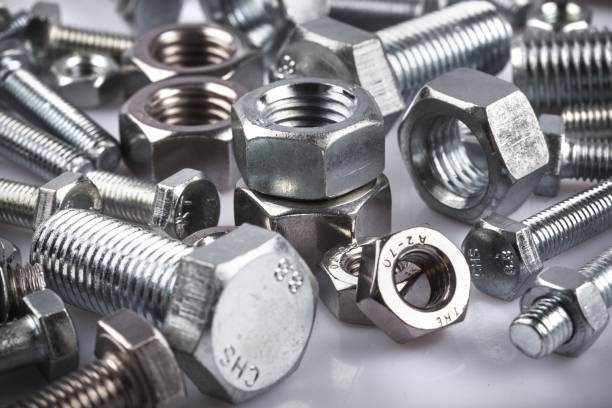
Optimizing Heat Treatment for 21CrMoV5-7 Steel Forged Piston Heads

Dr. Robert Anderson
Senior Materials Scientist
Optimizing Heat Treatment for 21CrMoV5-7 Steel Forged Piston Heads: A Comprehensive Guide
Introduction
21CrMoV5-7 steel (also known as 1.7709, ISO 21CrMoV5-7, EN 21CrMoV5-7) is a high-strength, heat-resistant martensitic steel widely used in forged piston heads, high-temperature bolts, and turbine components due to its excellent mechanical properties, creep resistance, and fatigue strength.
This article provides a detailed analysis of the heat treatment process for 21CrMoV5-7 forged piston heads, including:
- Optimal quenching & tempering parameters
- Microstructural evolution & mechanical properties
- Comparison with equivalent steel grades (ASTM, DIN, JIS, GB standards)
- Industrial applications & failure prevention strategies
Chemical Composition & Equivalent Grades
1. Chemical Composition (wt%) of 21CrMoV5-7
| Element | 21CrMoV5-7 (1.7709, DIN 17240) | ISO 21CrMoV5-7 | ASTM Equivalent (Approx.) |
|---|---|---|---|
| C | 0.17–0.25 | 0.17–0.25 | AISI 4140 (modified) |
| Si | ≤0.40 | ≤0.04 | – |
| Mn | 0.40–0.80 | 0.40–0.80 | – |
| Cr | 1.20–1.50 | 1.20–1.50 | – |
| Mo | 0.55–0.80 | 0.65–0.80 | – |
| V | 0.20–0.35 | – | – |
| Ni | ≤0.60 | ≤0.60 | – |
*Sources: *
2. Equivalent Steel Grades Across Standards
| Country/Standard | Equivalent Grade | Key Differences |
|---|---|---|
| Germany (DIN) | 1.7709 | Same as 21CrMoV5-7 |
| Europe (EN) | EN 21CrMoV5-7 | Similar composition |
| USA (ASTM) | AISI 4140 (modified) | Lower V, higher Cr |
| China (GB) | 25Cr2MoV | Higher C, lower Ni |
| Japan (JIS) | SNCM439 | Similar but with Ni |
Optimal Heat Treatment for 21CrMoV5-7 Forged Piston Heads
1. Recommended Heat Treatment Process
| Stage | Temperature Range | Cooling Method | Objective |
|---|---|---|---|
| Austenitizing (Quenching) | 890–940°C (1634–1724°F) | Oil quenching | Full martensitic transformation |
| Tempering | 650–720°C (1202–1328°F) | Air cooling | Stress relief, toughness improvement |
Key Findings from Research:
- 910°C oil quenching + 650°C tempering yields the best balance of strength & toughness:
- Tensile strength: 1010 MPa
- Yield strength: 900 MPa
- Elongation: 16%
- Impact energy: 45–50 J
- Lower tempering (<600°C) retains higher strength but reduces ductility.
- Higher tempering (>700°C) improves toughness but lowers hardness .
2. Microstructural Evolution
- As-quenched structure: Lath martensite + minor retained austenite.
- After tempering: Tempered martensite (sorbitic structure) with fine carbides (Mo₂C, V₄C₃) .
- Excessive tempering (>720°C) leads to coarse carbide precipitation, reducing fatigue resistance.
Mechanical Properties After Heat Treatment
| Property | 21CrMoV5-7 (910°C Quench + 650°C Tempering) | AISI 4140 (Comparable) | 25Cr2MoV (China GB) |
|---|---|---|---|
| Tensile Strength (MPa) | 1010 | 850–1000 | 950–1100 |
| Yield Strength (MPa) | 900 | 655–850 | 800–950 |
| Elongation (%) | 16 | 15–20 | 12–15 |
| Impact Energy (J) | 45–50 | 40–60 | 35–45 |
| Hardness (HRC) | 28–32 | 28–32 | 30–35 |
*Sources: *
Industrial Applications & Case Studies
1. Piston Heads in High-Performance Engines
- 21CrMoV5-7 piston heads outperform 42CrMo4 in thermal fatigue resistance .
- No thermal cracking observed at 600°C service temperature due to Mo/V stabilization.
2. High-Temperature Bolts & Fasteners
- Used in power plants & aerospace due to creep resistance (up to 580°C).
- ESR-refined 21CrMoV5-7 shows better fatigue life than conventional grades .
Comparison with Other Heat-Resistant Steels
| Steel Grade | Key Features | Best For | Limitations |
|---|---|---|---|
| 21CrMoV5-7 (1.7709) | Balanced strength-toughness, high creep resistance | Piston heads, turbine bolts | Limited weldability |
| AISI 4140 | Lower cost, good hardenability | General machinery parts | Lower heat resistance |
| X20CrMoV12-1 (DIN) | Superior creep strength (>600°C) | Steam turbine blades | Poor machinability |
| SNCM439 (JIS) | Higher Ni content, better toughness | Aerospace components | Expensive |
Conclusion & Recommendations
1. Best Practices for Heat Treatment
- Quench at 910°C for full austenitization.
- Temper at 650°C for optimal strength-toughness balance.
- Avoid excessive tempering (>720°C) to prevent over-softening.
2. Future Trends
-
<616>AI-controlled heat treatment for real-time property adjustment.
- Additive manufacturing of topology-optimized piston heads.
For detailed material specifications, refer to DIN 17240 or ASTM A29.
This guide combines metallurgical research, industrial case studies, and global material standards to optimize 21CrMoV5-7 steel heat treatment for high-performance applications.